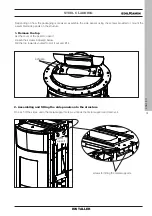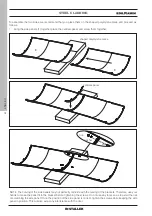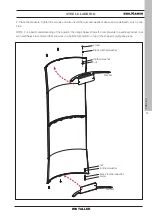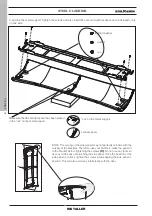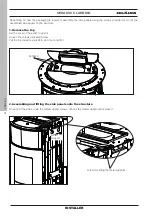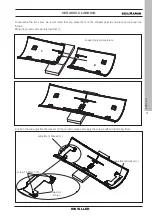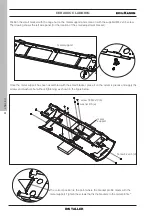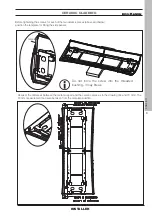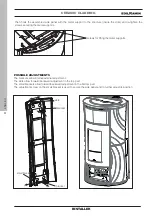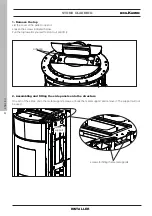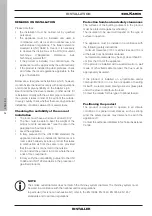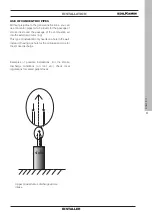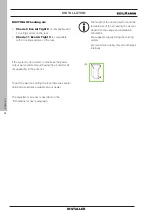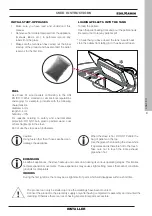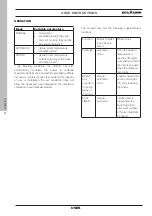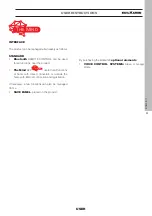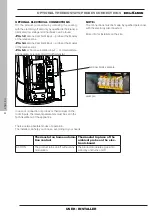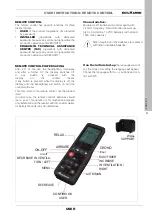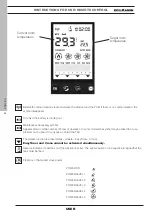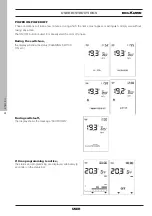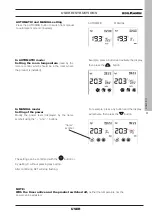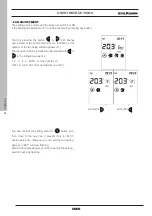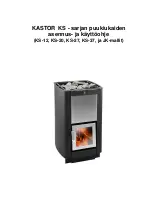
27
ENGLISH
INSTALLATION
INSTALLER
FLUE SYSTEM
FLUE SYSTEM
((Fumes duct, flue and chimney pot
Fumes duct, flue and chimney pot))
This chapter has been drawn up pursuant to European
regulations EN 13384, EN 1443, EN 1856 and EN
1457. The installer must observe both these and any
other local regulations. This manual does not in any
way substitute the applicable regulations.
The product must be connected to a smoke exhaust
system which ensures that the smoke produced by
combustion is expelled in complete safety.
Before positioning the appliance, the installer must
check that the flue is suitable.
SMOKE DUCT, FLUE
SMOKE DUCT, FLUE
The smoke duct (which connects the combustion
(which connects the combustion
chamber smoke outlet with the flue inlet)
chamber smoke outlet with the flue inlet) and the flue
itself must, among other regulatory requirements,
generally:
• receive the outlet from a single product only
(outlets of more than one product together are
not allowed)*; specific regulations apply in certain
countries, therefore the installer must ensure that
the local regulations have been observed;
• be installed vertically for the most part;
• have no downward sloping sections;
• preferably have a round internal cross-section and
nevertheless with a ratio between the sides below
1.5;
• end at roof level with a proper chimney pot: the
flue may not discharge directly on the wall or into
an enclosed space, even if the space in question
opens onto the sky;
• be made of material rated fire reaction class A1 per
UNI EN 13501 or analogous national regulations;
• be appropriately certified, with a suitable chimney
plate if made of metal;
• maintain the same cross-section throughout: it
may only vary immediately after the outlet, not
along the flue.
THE SMOKE DUCT
THE SMOKE DUCT
In addition to the general requirements for the fume
duct and the flue, the fume duct::
• may not be made of flexible metal material;
• must be insulated if routed through unheated
areas or outside;
• must not be routed through rooms where the
installation of combustion heat generators is
prohibited, or that are subject to potential fire, or
that cannot be inspected;
• must enable the recovery of soot and be open for
inspection;
• generally speaking, must not have more than 3
bends with a 90° maximum angle; the technician
who sizes them must assess the situation;
• generally speaking, if there is a horizontal section,
it can have a maximum/average length of 3 metres,
depending on the draught. Nonetheless, take into
account that long sections favour dirt build-up and
are harder to keep clean; the technician who sizes
the pipes must assess the situation.
Avoid infiltration of condensate water
through the flue. If necessary, mount an
anti-condensate ring – ask your chimney
sweeper for details.
Damage caused by condensate water is
not covered by the warranty.
*
In some nations, installations with multiple
flues are permitted under certain conditions.
Depending on regional regulations,
additional safety systems are necessary in
case of connection to multiple flues. Your
chimney sweeper/technician will be able to
provide further details.
Summary of Contents for CHERIE 11 EVO
Page 78: ...78 ENGLISH USER INSTALLER ...
Page 79: ...79 ENGLISH USER INSTALLER ...

